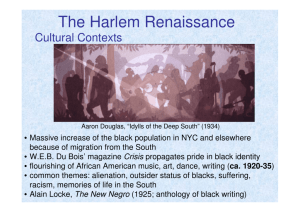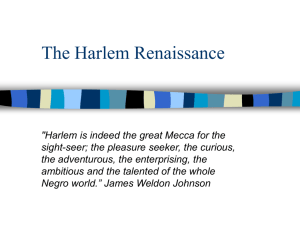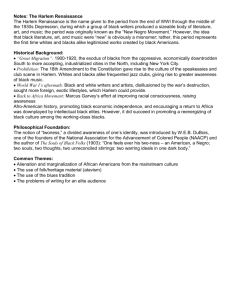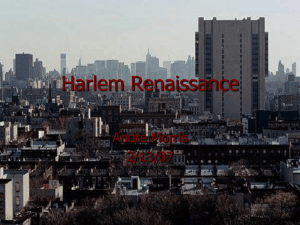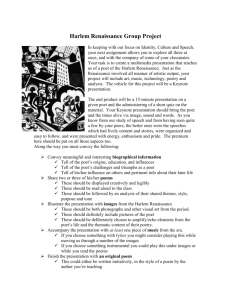Harlem Renaissance—1920s
advertisement
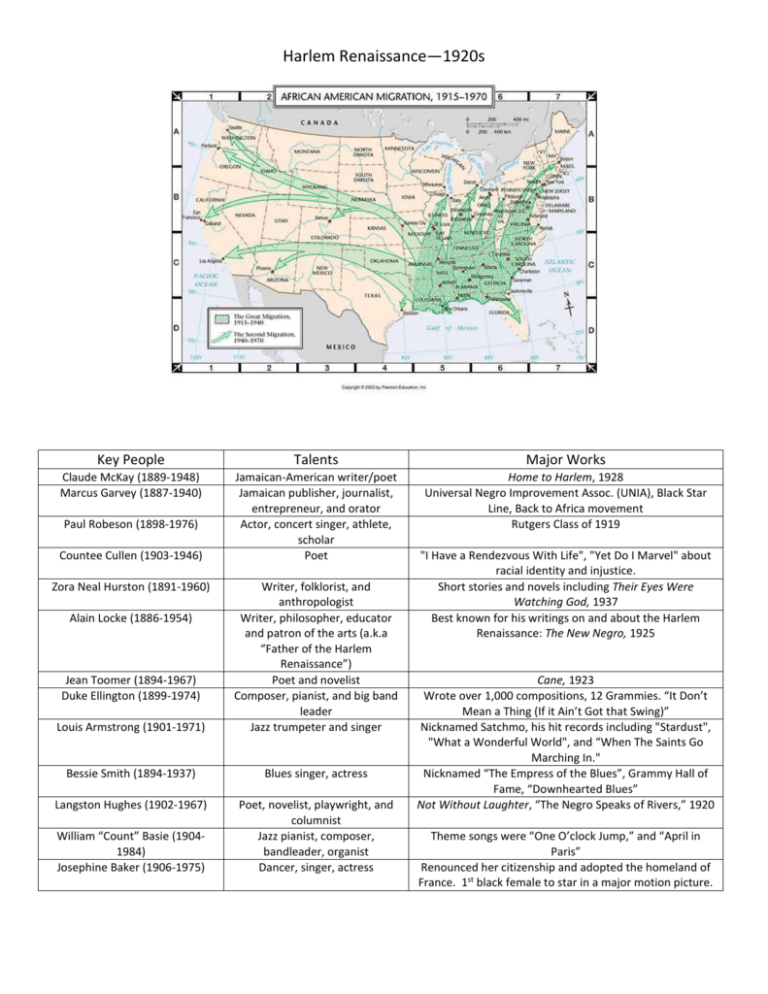
Harlem Renaissance—1920s Key People Talents Major Works Claude McKay (1889-1948) Marcus Garvey (1887-1940) Jamaican-American writer/poet Jamaican publisher, journalist, entrepreneur, and orator Actor, concert singer, athlete, scholar Poet Home to Harlem, 1928 Universal Negro Improvement Assoc. (UNIA), Black Star Line, Back to Africa movement Rutgers Class of 1919 Paul Robeson (1898-1976) Countee Cullen (1903-1946) Zora Neal Hurston (1891-1960) Louis Armstrong (1901-1971) Writer, folklorist, and anthropologist Writer, philosopher, educator and patron of the arts (a.k.a “Father of the Harlem Renaissance”) Poet and novelist Composer, pianist, and big band leader Jazz trumpeter and singer Bessie Smith (1894-1937) Blues singer, actress Langston Hughes (1902-1967) Poet, novelist, playwright, and columnist Jazz pianist, composer, bandleader, organist Dancer, singer, actress Alain Locke (1886-1954) Jean Toomer (1894-1967) Duke Ellington (1899-1974) William “Count” Basie (19041984) Josephine Baker (1906-1975) "I Have a Rendezvous With Life", "Yet Do I Marvel" about racial identity and injustice. Short stories and novels including Their Eyes Were Watching God, 1937 Best known for his writings on and about the Harlem Renaissance: The New Negro, 1925 Cane, 1923 Wrote over 1,000 compositions, 12 Grammies. “It Don’t Mean a Thing (If it Ain’t Got that Swing)” Nicknamed Satchmo, his hit records including "Stardust", "What a Wonderful World", and “When The Saints Go Marching In." Nicknamed “The Empress of the Blues”, Grammy Hall of Fame, “Downhearted Blues” Not Without Laughter, “The Negro Speaks of Rivers,” 1920 Theme songs were “One O’clock Jump,” and “April in Paris” Renounced her citizenship and adopted the homeland of France. 1st black female to star in a major motion picture.
